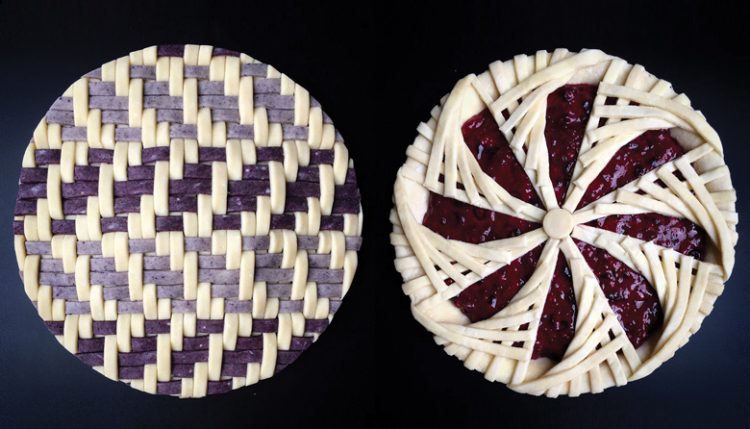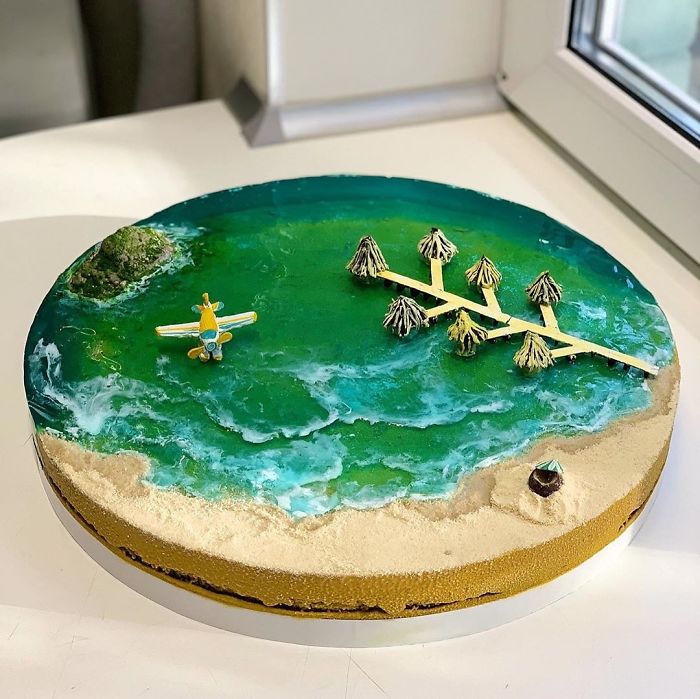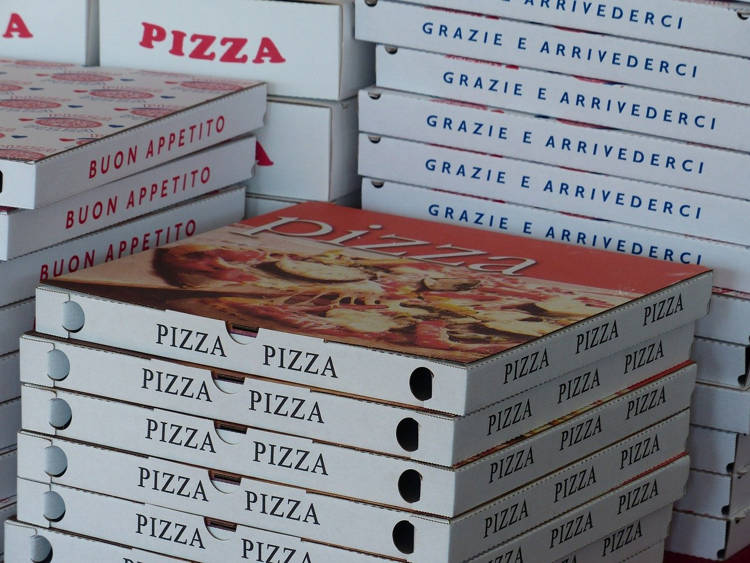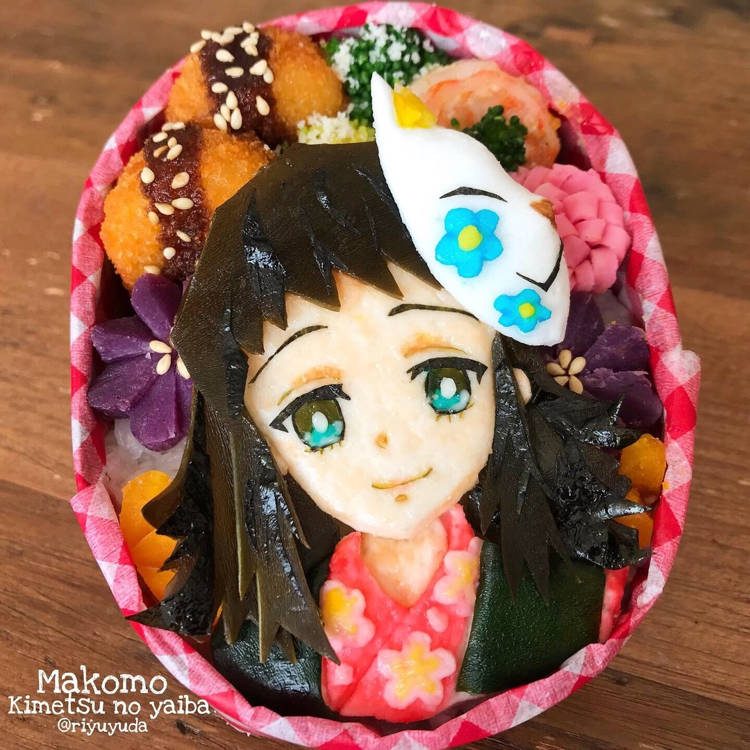Sweet Geometry – Lauren Ko’s Mesmerizing Pies

Seattle-based Lauren Ko is a self-taught baker who rose to fame thanks to the mathematical precision of her pie designs, most of which are inspired by complex geometric patterns. A former executive assistant in higher education, Lauren Ko got into baking completely by accident. She saw a picture of a really beautiful pie while surfing […]
The Potentially Deadly Mushroom That the Finns Can’t Get Enough Of

Gyromitra esculenta, or the False Morel, is a Spring mushroom that contains the toxin and carcinogen gyromitrin, which makes it illegal to sell and cook in countries around the world. In Finland, however, it is considered a delicacy. False Morel mushrooms have historically been consumed in northern Europe for centuries, but as chemistry and medicine […]
These Marine-Themed Cakes Are the Coolest Treats We’ve Seen in a While

From flamboyant wedding cakes shaped like fantasy castles, to edible optical illusions, we’ve featured some amazing cakes here on OC, but this collection of marine-themed treats definitely take the cake! The Covid-19 pandemic has made vacationing in a tropical island paradise a lot harder this year, but you can satisfy your craving for tropical destinations […]
Too Good to Eat – The Intricately-Detailed Cakes of Tuba Geckil

Tuba Geckil is a talented cake artist who specializes in making delicious desserts that double as optical illusions. From ultra-realistic cakes shaped as Crocs shoes and salami-topped pizza, to detailed busts of real-lief and fictional characters, there’s nothing that Turkish food artist Tuba Geckil can’t shape her cakes as. In fact, some of her best […]
Company Unveils World’s Fist 3D-Printed Meatless Steak

Redefined Meat, an Israeli startup specializing in alternative meat, recently unveiled what it calls the world’s first 3D-printed plant-based steak called Alt-Steak. Using its own patent-pending 3D-printing technology, Redefine Meat has allegedly been able to create a meatless steak that features the appearance, texture, and, most importantly, the taste of the real thing. The company […]
Japan’s Square Watermelons – Nice to Look at But Hard to Swallow

Unless you’ve been living under a rock for the past decade or so, you’ve probably seen pictures of Japan’s square watermelons doing the rounds online. I know I have, but what I never knew was that these weird-looking fruit are basically inedible. Perfectly sized and shaped fruits are big business in Japan, and it’s not […]
Belgian Man Has Been Receiving Pizzas He Never Ordered for Almost a Decade

Seeing the pizza deliveryman at your doorstep is usually a cause for joy, but one Belgian man claims that he starts shaking whenever he hears a scooter, thinking it’s yet another delivery he never asked for. They’ve been coming for the last nine years, and he has had enough. Jean Van Landeghem, a 65-year-old man […]
Japanese Pudding Specialty Shop Goes Viral for Its Unique Blue Pudding

Numazu Port, in central Japan’s Shizuoka Prefecture, was more famous for its seafood dishes and arresting views of Suruga Bay, but ever since photos of a visually striking blue pudding started doing the rounds online the port town has become known for its gourmet desserts as well. The Numazu Deep Sea Pudding Factory (Numazu Shinkai […]
Thai Restaurant Relies on Hunky Deliverymen to Fight Covid-19 Crisis

Restaurants have been among the most hard-hit businesses by the ongoing Covid-19 pandemic, but one venue in Bangkok, Thailand has come up with an ingenious way to stay afloat in these troubled times – using hunky models as food deliverymen. 76 Garage, a restaurant in Bangkok’s Lat Phrao District, was known for its attractive and […]
Japanese Mom Specializes in Deliciously Cute Fried Egg Art

A Japanese mother-of-three who took up food art as a way to entertain her daughters struck gold on Instagram after specializing in cute fried egg artworks. Etoni Mama is often described as a master of kyaraben (or Charaben), the Japanese art of arranging various foods as elaborate, eye-catching designs, but it was her fried egg […]
Hong Kong Shop Unveils “Tear Gas” Flavor Ice Cream in Memory of Recent Protests

A Honk Kong entrepreneur has come up with an ingenious way of keeping the semi-autonomous city’s recent protests for democracy alive in people’s memories – by introducing a pungent, throat irritating ice-cream flavor reminiscent of tear gas. The shop owner, who preferred to remain anonymous, told reporters that he created the new “tear gas” ice […]
Vietnamese Province Attracts Worldwide Attention for Its Giant Loaves of Bread

Believe it or not, the Vietnamese province of An Giang, in the Mekong Delta, is less known for its breathtaking natural attractions than for the giant loaves of bread that went viral online a couple of years back. It all started in 2018, when lifestyle and entertainment website Brightside published a list of the world’s […]
Japanese Mom Creates the Most Adorable Anime-Themed Bento Boxes

A Japanese mother-of-two has been getting a lot of attention on social media sites like Instagram and Pinterest for her incredibly detailed and colorful anime-themed bento boxes. If you’re even a little familiar with Japanese culture, you probably know about “kawaii”, the people’s affinity for all things cute, and the attention to detail present in […]
The World’s Toughest Cheese Is Hard as a Rock, Turns into Chewing Gum

I understand that the title reads a bit strange, but then again this is no ordinary cheese we’re talking about. It’s the hardest cheese in the world, and yes, it can be chewed like gum for up to two hours. Chhurpi or Durkha is a traditional Nepalese cheese that has been a means of survival […]
Finger Lime – The Rare and Super Expensive Caviar of Citrus

Shaped more like a like a jalapeno pepper than a citrus fruit, the small finger lime yields tiny caviar-like pearls that burst with flavor when you bite into them. Originating from the lowland subtropical rainforests of coastal Australia, Citrus australasica, or the Australian finger lime has become one of the most sough-after ingredients by Michelin star […]
